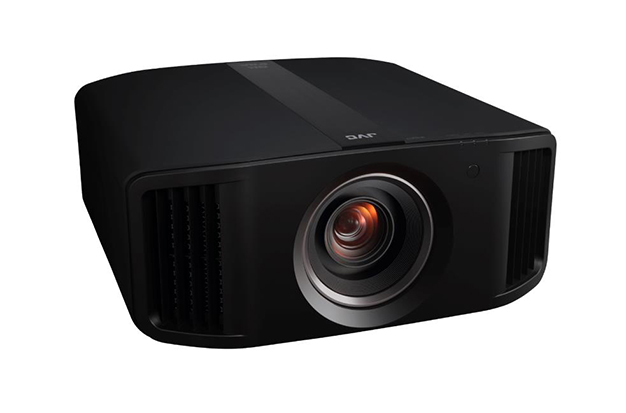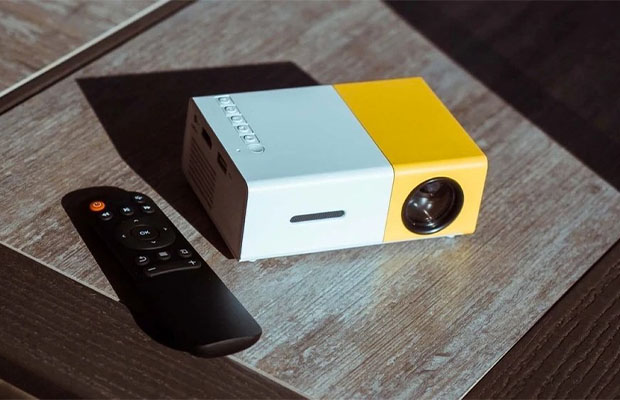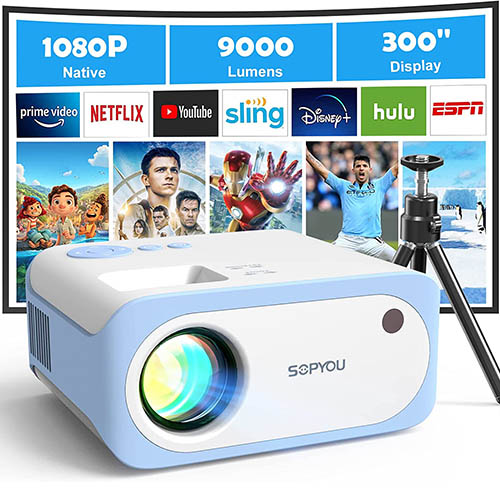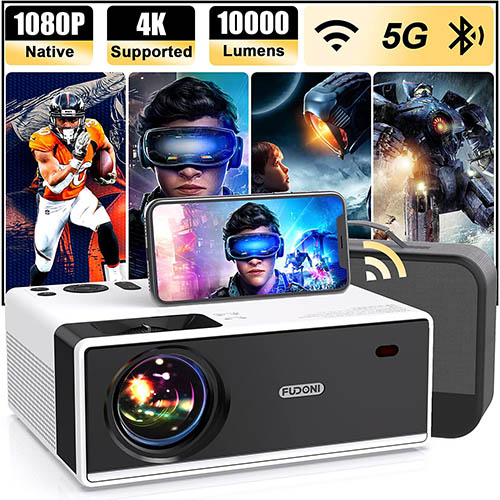Today is our chance to post a review of the JVC DLA-NZ8 laser projector, which sits in the middle of the brand hierarchy.
If the top model of the JVC cinema projector series at first glance can be distinguished by a larger lens (the lens of the bigger model uses glass lenses with a diameter of 100 mm, and the rest use 65 mm), then the projectors standing next to each other DLA-NZ7and DLA-NZ8 resemble identical twins.
The proprietary optical image shift system logo, which is used to achieve 8K image resolution when using D-ILA matrices with native 4K resolution, is applied to the top wall of the case, but only if you look closely. On the back of the NZ7 is 8K/e-shift, whereas the NZ8 has 8K/e-shiftX. There were no more obvious differences between the projectors on the outside, but that does not necessarily mean they do not.
Table of Contents
JVC DLA-NZ8 Laser Projector Overview
The latest native 4K projector from JVC uses a BLU-Escent laser light source, as opposed to earlier lamp-based generations. As a result, there are no adverse effects on the black levels or increased fan noise, and the images are brighter, more consistent, and last longer. Therefore, this great projector builds on JVC’s already strong points while enhancing them in some areas and introducing a plethora of brand-new cutting-edge features in others.
While the 8K/e-shiftX processing helps make already excellent content look even better, the native 4K images are precise and detailed. Because of JVC’s dynamic tone mapping and Theatre Optimiser feature, the overall picture accuracy is impressive, the SDR images are excellent, and the HDR performance continues to be among the best in its class. Even HDR10+ is supported, and 3D images that are punchy, bright, and crosstalk-free are also included.
There are two HDMI 2.1 inputs that support 8K/60p and 4K/120p as additional features. For gamers, this is good news, as is the 38ms input lag. The projector is also much faster at locking onto video signals, which is an added advantage of HDMI 2.1. With stand or ceiling mounting, keep in mind that this beamer is big and heavy. Other features include an efficient remote control, an easy-to-use menu system, and flexible installation.
Although the pricing of JVC’s new line-up is meant to reflect the comparably high cost of 4K laser projectors from Sony, the NZ8 is also very expensive. It’s interesting to note that the NZ8 doesn’t currently have a direct rival, so if you value unwavering performance, unrivaled HDR tone mapping, extensive features, and high levels of performance future-proofing, this remarkable projector is a cut above the rest.
Key Features
- Native 4KFull 4K (4096 x 2160 pixels) D-ILA chipset
- Laser light sourceBLU-Escent laser diode with a claimed brightness of 2500 lumens and a lifespan of 20,000 hours
- Frame Adapt HDRDynamic tone mapping for a superior projected HDR experience
- Theatre OptimiserCustomise the projector’s HDR to your specific home cinema setup
- 8K/e-shiftXFour-direction shift produces an 8K-quality image of 8192 x 4320 pixels
- Two HDMI 2.1 inputsSupport 8K/60, 4K/120, and HDR10+
Pros
- Long lasting solid state laser light source
- HDMI 2.1 support
- HDR10 Support with Dynamic Tone Mapping
- HDR10+ Support
- Accepts and resolves signals up to 8K resolution
- Industry leading contrast and black level
Cons
- Light loss with picture modes that engage Cinema Filter
- Fairly loud in high laser mode
- Out of box accuracy may vary unit to unit
Design
- 65mm all-glass lens
- 2 x HDMI 2.1 inputs
- Backlit remote control
With the same matte black chassis and superb level of build quality as the previous generation, the JVC DLA-NZ8 looks exactly like it did. The only difference is in the rear, where there are no detachable dust filters and slightly larger air vents. Despite its size, the design skillfully incorporates curves into the shape of the chassis to help reduce the projector’s overall bulk.
It’s important to note that the NZ8 is enormous, measuring 500 x 234 x 505mm (WxHxD) and weighing a burdensome 23.1kg. Therefore, you wouldn’t use it to watch the big game or for movie night. This is a serious product that can be permanently mounted on a stand or the ceiling of a home theater room.
Same 17-element, 15-group, all-glass 65mm lens that was first featured on JVC’s previous generation of 4K projectors is present in the new model. By adding an interior coating intended to block any reflected light, it has been upgraded to improve contrast performance. This improvement explains how the NZ8’s increased brightness is able to match the contrast ratio of the DLA-N7.
The addition of HDMI 2.1 inputs, made by JVC as the first manufacturer to do so, is one of the biggest improvements on this new generation of 4K projectors. These 48Gbps ports can handle both 8K/60p and 4K/120p content and support HDCP 2.3, 3D, and high dynamic range, specifically HDR10, HLG, and HDR10+, the latter of which is a new addition. They also accept 8K/60p and 4K/120p content. A surprising advantage of HDMI 2.1 is that the NZ8 locks onto video signals more quickly than earlier JVC models, which were agonizingly slow.
This is good news because the provided remote is a top-notch controller. It is the same as the previous generation. With all the buttons laid out logically, it’s cozy to hold and simple to operate with one hand. There is a dedicated backlight, which works really well because it illuminates the text on the buttons, making it simple to read them in the dark.
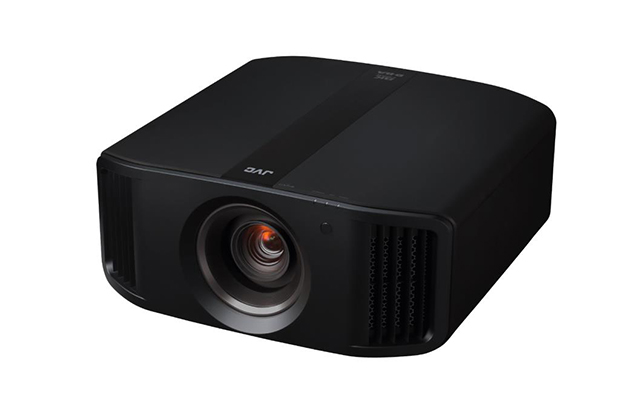
Price And Availability
Aside from adding HDMI 2.1 inputs that can handle 8K/60p and 4K/120p, 8K/e-shiftX with an actual resolution of 8K, improved optics, and support for HDR10+, JVC’s new NZ series of laser-powered projectors has all the features found on the previous lamp-based generation.
The DLA-NZ9, also known as the DLA-RS4100 in some markets, is the star model in the new line. Costing an eye-watering £24,999/$25,999, this projector’s flagship model is state-of-the-art, boasting a 100mm all-glass lens with ultra-high contrast optics, a 100mm native contrast of 100,000:1, and a claimed brightness of 3,000 Lumens.
The DLA-NZ8 (DLA-RS3100) reviewed here is essentially identical to the NZ9 and costs £15,800/$15,999. However, it hits 2,500 Lumens, has a contrast of 80,000:1, and has a smaller 65mm all-glass lens. On the other hand, it does have the same enhanced optical path and other features as the premium model.
The DLA-NZ7 (DLA-RS2100) is the last option, with a retail price of £11,500 ($10,999), which is a little more reasonable. With a brightness of 2,200 Lumens and a contrast of 40,000:1, this projector is comparable to the NZ8 but does not use improved optics. Additionally, it uses the same bi-directional 8K/e-shift found on the earlier DLA-NX9 rather than the new four-directional 8K/e-shiftX used on the NZ8 and NZ9, and lacks the wide color gamut filter found on the more expensive models.
Features
- BLU-Escent laser light source
- 4K (4096 x 2160) D-ILA chipset
- 8K/e-shiftX image processing
- HDR Dynamic tone mapping
- Theatre Optimiser
The JVC DLA-NZ8 includes the BLU-Escent laser diode light source, which was first made available on the astronomically expensive DLA-Z1. As a result, the brightness is increased, the consistency is improved, and the lamp has a lifespan of 20,000 hours, so there is no need to replace it or notice any obvious dimming over time.
The NZ8 adds 8K/e-shiftX processing while utilizing the 4K (4096 x 2160) D-ILA device that JVC first introduced on earlier projector generations. Unlike the bi-directional 8K/e-shift used on the DLA-NX9 (and also on the NZ7), 8K/e-shiftX shifts the pixels in four directions to produce an 8192 x 4320 pixel image with full 8K quality.
First-rate HDR from JVC includes Auto Tone Mapping, which reads static metadata and makes appropriate adjustments. While the Theatre Optimizer maximizes the HDR delivery to best suit your screen size and gain, Frame Adapt HDR analyzes the signal and modifies the tone mapping on the fly.
In addition to motorized focus, zoom, and shift controls that make installation a breeze, there are lens memories for various aspect ratios. In relation to that, the menu system has been adjusted so that the Theatre Optimiser now enables you to specify whether your screen uses a 16:9 or 2.35:1 aspect ratio.
Along with two Dynamic CTRL settings that allow the laser’s brightness to be dynamically adjusted, the laser light source has three LD Power settings (low, mid, and high). Even in the brighter Mid setting, the laser is surprisingly quiet, and the High setting isn’t much louder either.
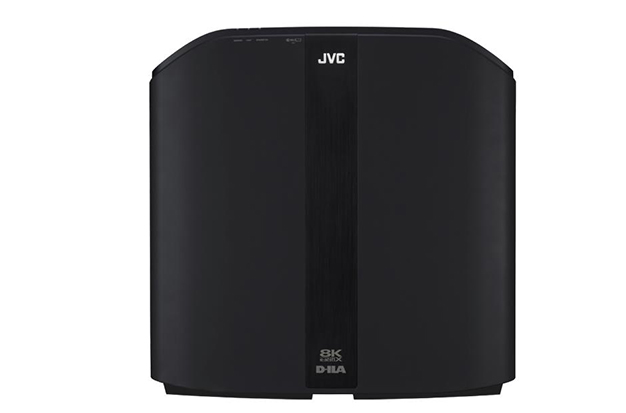
Connections And Control
Although the JVC DLA-NZ8 initially appears to have the same set of connections as the previous generation, there has actually been a significant upgrade, with the HDMI inputs now supporting the majority of version 2.1 features at the full 48Gbps bandwidth. In addition to high dynamic range (HDR10, Hybrid Log-Gamma (HLG), and HDR10+), 3D, HDCP 2.3, 4:4:4, 12-bit, and BT.2020, you also get support for 8K/60Hz and 4K/120Hz. However, there is obviously no support for ARC or eARC, nor is there any for HDMI-CEC, variable refresh rate (VRR), or auto low latency mode (ALLM).
The remaining connections are the same as before and include a LAN (RJ-45) port for a network connection, an RS232 (Sub 9pin) terminal for serial control, a 12V/100mA trigger, a USB Type A port for firmware updates, and a Mini-Din 3pin connector for the optional 3D synchro emitter.
It’s a good thing that the provided remote is identical to the previous generation because it’s a great controller. The layout of the buttons makes it easy to use with one hand and comfortable to hold. There is a backlight button that is specifically designed to illuminate the writing on the buttons themselves, making them easy to read in low light.
Additional keys for power, source, info, input, lens control, and memory settings are located near the center-located menu and navigation controls. Additionally, shortcut buttons are provided for quick access to important menu options like picture modes, color profiles, gamma settings, and C.M.D., Advanced menus and MPC are examples.
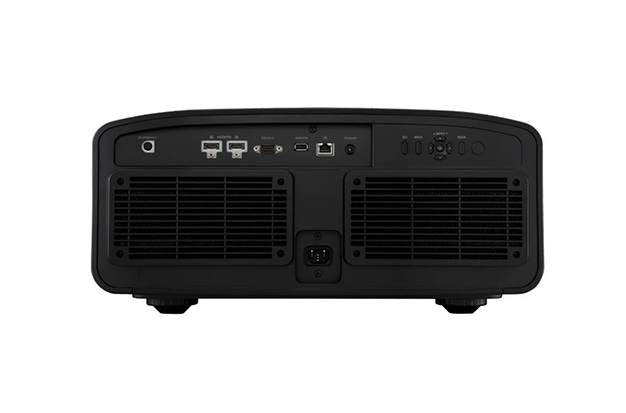
Performance
- Awesome HDR images
- Stunning saturated colours
- Eye-popping 3D visuals
While maintaining that crucial film-like quality that makes projected images look so good, the JVC DLA-NZ8 produces stunning 4K images with astounding levels of detail. The top-notch uniformity and geometry guarantee that this projector builds a strong foundation.
Natural-looking images that meet industry standards right out of the box are produced by excellent color accuracy. The JVC’s blacks are as deep and rich as ever, and the improved light path improves contrast performance. Add the increased laser brightness and the picture really pops.
The ability to handle motion smoothly and without blurring or unwanted artifacts is equally impressive. Taking lower-resolution content and upscaling it to 4K, the processing is first-rate. The 8K/e-shiftX goes even further by producing a perceived resolution of 8K.
In terms of SDR performance, this projector excels, but when it comes to HDR, it is truly exceptional. To expertly render HDR that fully exploits the format’s enhanced brightness and wider color gamut, those deep blacks and bright highlights work flawlessly with flawless tone mapping.
The scene in Allied where Brad Pitt observes an air raid perfectly exemplifies the exceptional contrast and tone mapping, revealing deep blacks and fantastic shadow detail along with specular highlights that distinguish the bright tracer fire and flak against the night sky.
The NZ8 employs a filter to expand the color gamut, which results in gorgeously saturated primaries but also slightly less brightness overall. The Greatest Showmanreally pops with a mesmerising array of colours that seamlessly merge with precisely delivered highlights.
The HDR10 is often breathtaking, but the NZ8’s support for HDR10+ also enables this projector to take advantage of the latter’s additional dynamic metadata to deliver exceptional images where more precise tone mapping gives the dynamic range more latitude and greater impact.
The intricate 4K photography is reproduced with breathtaking clarity in the movie 1917, which supports HDR10+. But the scenes that take place at night and are only lit by flares, which produce deep blacks and finely detailed shadows, really demonstrate what this projector can do with the additional metadata.
The NZ8 delivers the additional dimensionality with bright, accurate, and ghost-free images for an equally stunning 3D performance. You’ll need to buy the optional RF transmitter and glasses, but if you love 3D, you won’t be dissatisfied.
Finally, gamers will be happy to learn that this projector’s input lag, even with low latency enabled, is only 38ms. With the 4K/120p support and laser light source added, the NZ8 becomes a great, if pricey, gaming option. This produces responsive gameplay that is enjoyable to use.
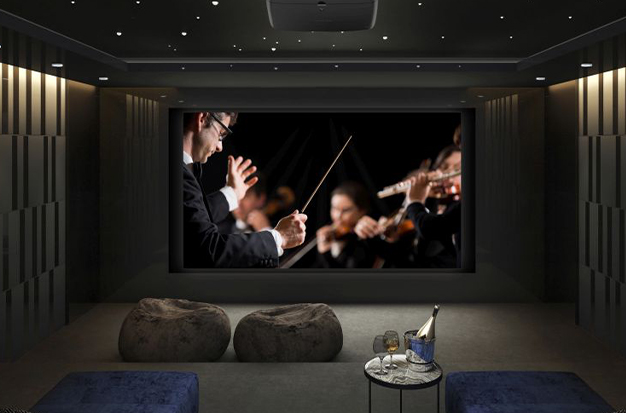
JVC DLA-NZ8 4K Laser Projector Review: Should I Buy It?
Buy it:
You want gorgeous 4K images with that elusive film-like quality
While JVC’s justifiably renowned deep blacks and superior contrast performance result in that crucial film-like quality, setting this projector apart from the competition, the combination of a 4K chipset and all-glass lens produces fantastically pin-sharp images.
You want class-leading HDR tone mapping
JVC’s projectors are superior to those made by any other company because they use cutting-edge dynamic tone mapping and a feature that optimizes overall performance for particular home theater setups to create stunningly detailed and impactful HDR images.
You want 8K/60p and 4K/120p support for next-gen gaming
The NZ8 can project an 8K image with no discernible loss in resolution thanks to the addition of 8K/e-shiftX image processing and HDMI 2.1, which support 8K/60p and 4K/120p signals. Therefore, this projector will continue to be useful despite its high price.
Don’t buy it:
You want something small or portable for occasional use
The NZ8 is a serious home theater projector with a sizable chassis and a high price tag. It is intended to be permanently mounted on a wall or in a stand in a dedicated space, and a suitable screen is also required for peak performance.
You want a projector to use in a white room or during the day
Even though the NZ8 is bright, it will have trouble in a space with white walls, windows, or any other light source. Because any reflected light will smear JVC’s class-leading contrast performance, the darker the room, the better the results.
You want really bright HDR like on a TV
This really applies to all projectors, but none of them can compete with a TV in terms of peak brightness for HDR. As a result, a big-screen TV is a better option than a projector if you want really bright specular highlights.
What Other Options Do I Have?
The obvious substitute is JVC’s own DLA-NZ7, which offers most of the same features while saving £4,300. There is no wide color gamut filter, but that is not a problem with HDR10+. The brightness, contrast, and 8K/e-shift aren’t quite as good. In contrast, it’s challenging to endorse the DLA-NZ9 when the NZ8 is essentially identical, making it challenging to justify spending an additional £9,200 for a better lens and a little more contrast and brightness. Therefore, despite its high price, JVC’s new line of 4K laser projectors may have a performance sweet spot in the NZ8.
The two Sony 4K HDR laser projectors that are priced either side of the JVC’s NZ8 are the main alternatives since neither is a direct rival to it. The VPL-VW790ES, which costs £11,999 and features 2,000 lumens, HDR10/HLG support, and cutting-edge image processing, is one option. The superior blacks, dynamic tone mapping, 4K/120Hz support, and many other features of JVC are absent, though. The VPL-VW870ES costs £24,995, but aside from a slightly brighter output of 2,200 lumens compared to the VW790ES, it doesn’t really offer anything new. Therefore, it is evident that the JVC NZ8 is a superior option.
Read More: Bold Projector Review
Conclusion
It’s okay that the JVC DLA-NZ8 is more of an evolution than a revolution. While offering the consumer new features and advantages, it improves upon what JVC has already demonstrated it is capable of doing so well. My previous reference projector was the NX9, so I was a little concerned that the NZ8 would feel like a step down or more of a lateral upgrade. Though I do, to a certain extent, miss the high-end 100mm lens found in the NX9 and NZ9, I still believe that the NZ8 is a worthwhile upgrade from an NX9 given everything it has to offer.
For instance, adding HDMI 2.1 to my theater setup is important because almost all of my devices support it. Features that I previously couldn’t access with the NX9 are suddenly available to me now that it is visible throughout the chain. Having multiple connected source devices that support HDMI 2.1 will therefore greatly benefit from this.
As for brightness, I didn’t think there would be much of a difference between the two projectors, but I was mistaken. The NZ8 is noticeably brighter. It also provides a solid-state light source so I never have to replace an expensive lamp, runs cooler and quieter, turns on and off very quickly, and is appropriate for gaming. There really isn’t much to dislike about the unit. Contrasting this unit with the other NZ models in the line, I actually believe that it is the best option even at this midrange price.
The only thing I would personally like to see is a little less variation from unit to unit. I’ve calibrated a few RS3100/NZ8 in the field, and while there will inevitably be some variation, it would be great if there was a little less. To be fair, even my first sample wasn’t too bad, but if you do get a sample like that where the LUT loaded on the device for grayscale/gamma or gamut targets isn’t the best, it might call for a lot of forceful use of the Gain and Offset controls to get it in line. Fortunately, this wasn’t the case with the units I encountered in the field, and my second test sample performed better than the first one even though it wasn’t as accurate right out of the box as the units I’ve seen in the wild. Regardless, I appreciate that JVC offers their calibration software because, when this does happen, that is really the best way to fix it. The best, most accurate narrow bandwidth light meters for calibrating a laser light source are not supported by that software…though they are viable solutions. To support the best tools for these new laser projectors, JVC’s software should soon be updated.
In any case, the JVC DLA-NZ8 is a fantastic projector and did a fantastic job on everything I watched. It remains to be seen how it will compare to Sony’s new lineup, but as things stand, JVC and the NZ series will continue to be mentioned when discussing the best home theater projection, and rightfully so. The Editor’s Choice Award from ProjectorCentral is thus due to it.

